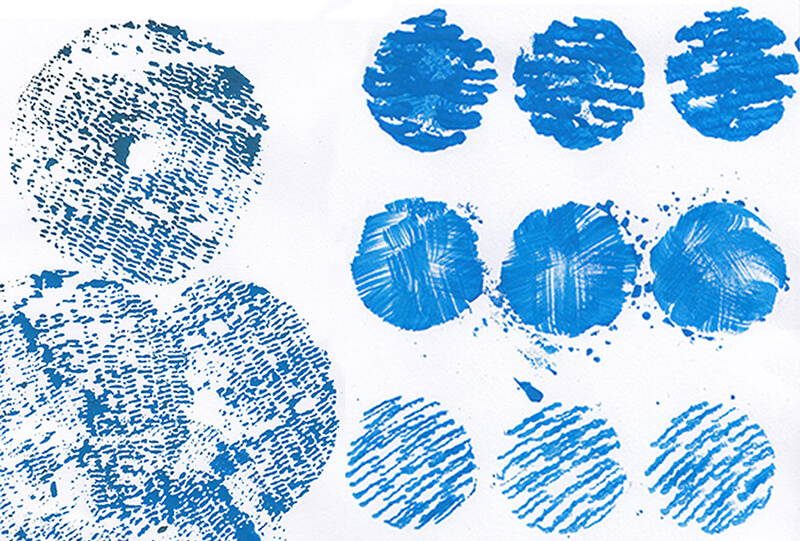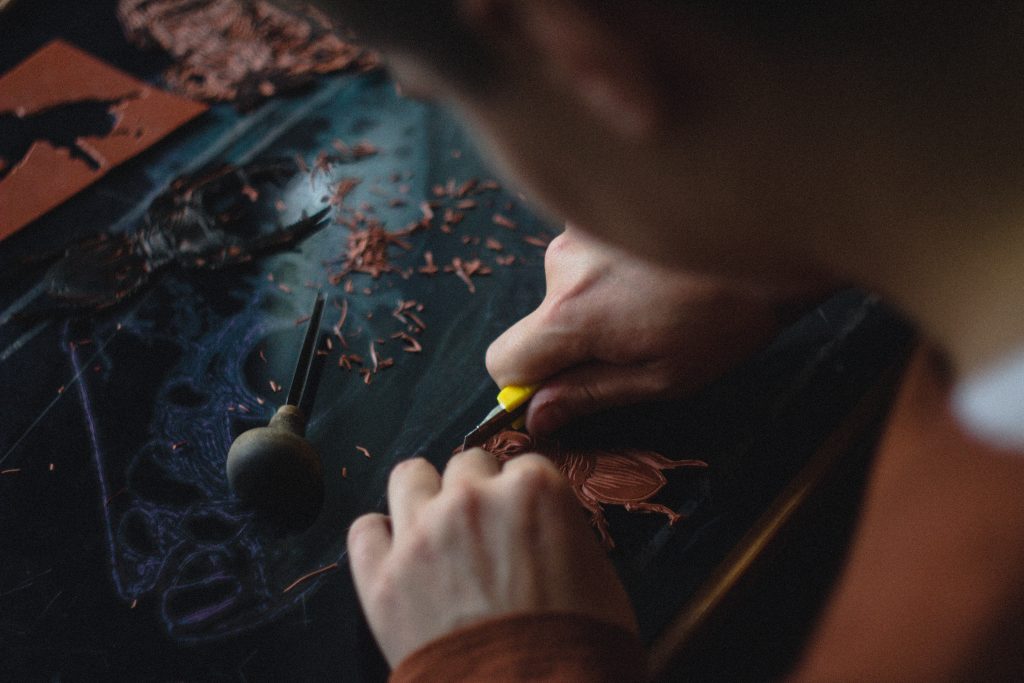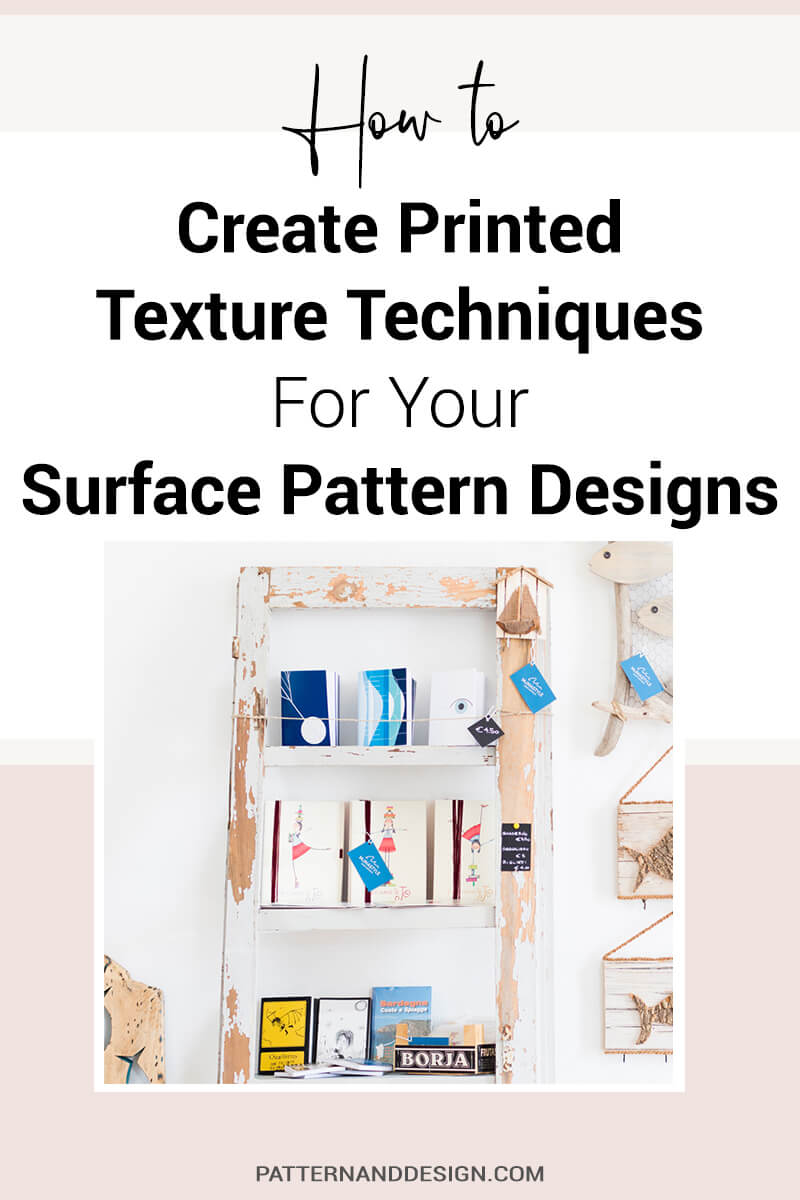learn about all things surface pattern design including the creative design process, being a successful creative entrepreneur & stepping into the mindset of a successful designer
welcome to the pattern design blog
blog
The
Categories
Popular
Creating Printed Texture Techniques
A really important element to consider when creating surface pattern designs is texture. Texture allows you to create interest in a design and can be created through a multitude of ways.
Texture can be either implied and visual or a tactile surface. Visual texture will give a surface the look of having a texture while still being a flat surface whereas tactile surface refers to the feel of the actual surface e.g. rough or smooth. Surface pattern designs commonly use textural effects to create pattern and interest within a design. Texture can be used simply and restrained or it can be more detailed and complicated.
There are many different ways to achieve textural effects but one of my favourites is experimenting with printing techniques. I love spending time playing with different printing methods, surfaces and objects to create interesting textures which I can scan and use within my surface pattern designs. Any object you can add paint to and stamp can be used for printing. Use your imagination and have fun with it and you’ll end with lots of spontaneous effects.

Things to consider when creating printed texture techniques:
- Surface: You will achieve different results according to the surface you are printing on. Experiment with different paper types e.g. rough and smooth, textured, newspaper, printed paper, Japanese rice paper
- Generally, your paint needs to be of a thicker consistency to successfully print. If it’s too watery, the impression of the object will be harder to see. It’s worth spending the time experimenting with different paint consistencies to see what effects can be created.
- Overlap your design to create interesting effects
- Experiment with using more than one textural effect together
- Be creative with the objects you use for printing. There are no limitations so be creative!
For some bonus ideas to help you start creating beautiful textures in your designs, sign up for my Free download below.
Here are 3 printing methods you can experiment with to create texture in your surface pattern designs:
1. Stamping
Stamping is simply adding paint to an object and then stamping it onto a surface. A simple method of stamping that will bring back childhood memories is potato stamping. You can simply cut a potato in half, carve a shape or pattern into it, apply paint to the surface and then print with it. The same method can also be done using rubber, foam or lino. The easiest way to do this is with lino cutting tools which come in different shapes and sizes to allow you to cut both intricate and detailed work as well as larger sections.
Some things that are important to consider when creating stamps is:
- You need to carve away the negative space as the remaining raised area is what will be printed
- The image you carve will be printed in reverse

2. Stencils
You can create stencils easily by using paper or acetate. When creating a stencil it’s important to consider your design carefully. Remember that all parts of the design need to be joined to the background e.g. you can’t have any printed areas within other printed areas without being joined to the background. Once your design has been cut, you can then place your stencil over your surface and apply paint to it. Think about different methods to apply the paint e.g. paintbrush, sponge, roller etc.
Some things that are important to consider when creating stencils:
- Make sure you have a sharp blade and a cutting mat
- Make sure all elements are connected to the background
- The image you carve will be printed in reverse
3. Found Objects
Once you start experimenting with printing, you will find yourself looking at objects around the house and judging their printing potential. Some of my favourites are:
- Household Objects: cotton buds, cups, sponges, bubble wrap, cardboard
- Craft: foam, bubble wrap, pipe cleaners, buttons, zips, doilies, lace, mesh, corduroy
- Natural Objects: sea sponges, hessian, leaves, twigs, string, feathers
Any mark or texture you create has potential to be part of a beautiful and successful surface pattern design. Make sure you keep all your experimentations filed away so you have a resource folder full of interesting ideas that you can always refer to.
Roll up your sleeves, get printing and have fun!
P.S. Don’t forget to check out my BONUS 10 FREE texture techniques

Want to create another revenue stream by turning your art into surface pattern designs?
Get the free guide
Get my FREE Surface Pattern Design Starter Guide